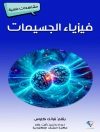This second edition is based on the successful concept of the first edition in presenting a unified perspective on molecular charge and energy transfer processes. The authors bridge the regimes of coherent and dissipative dynamics, thus establishing the connection between classic rate theories and modern treatments of ultrafast phenomena. The book serves as an introduction for graduate students and researchers.
Among the new topics of this second edition are
– semiclassical and quantum-classical hybrid formulations of molecular dynamics
– the basics of femtosecond nonlinear spectroscopy
– electron transfer through molecular bridges and proteins
– multidimensional tunneling in proton transfer reactions
– two-exciton states and exciton annihilation in biological and nonbiological chromophore complexes
More illustrating examples as well as an enlarged reference list are added. A new chapter gives an introduction into the theory of laser pulse control of molecular transfer processes.
विषयसूची
1 Introduction.
2 Electronic and Vibrational Molecular States.
2.1 Introduction.
2.2 Molecular Schrödinger Equation.
2.3 Born–Oppenheimer Separation.
2.4 Electronic Structure Methods.
2.5 Dielectric Continuum Model.
2.6 Potential Energy Surfaces.
2.6.1 Harmonic Approximation and Normal Mode Analysis.
2.6.2 Operator Representation of the Normal Mode Hamiltonian.
2.6.3 Reaction Paths.
2.7 Diabatic versus Adiabatic Representation of the Molecular Hamiltonian.
2.8 Supplement.
3 Dynamics of Isolated and Open Quantum Systems.
3.1 Introduction.
3.2 Time–Dependent Schrödinger Equation.
3.3 The Golden Rule of Quantum Mechanics.
3.4 The Nonequilibrium Statistical Operator and the Density Matrix.
3.5 The Reduced Density Operator and the Reduced Density Matrix.
3.6 The Reservoir Correlation Function.
3.7 Quantum Master Equation.
3.8 Reduced Density Matrix in E nergy Representation.
3.9 Generalized Rate Equations: The Liouville Space Approach.
3.10 The Path Integral Representation of the Density.
3.11 Quantum–Classical Hybrid Methods.
3.12 Supplement.
4 Vibrational Energy Redistribution and Relaxation.
4.1 Introduction.
4.2 Intramolecular Energy Redistribution.
4.3 Intermolecular Vibrational Energy Relaxation.
4.4 Polyatomic Molecules in Solution.
4.5 Supplement.
4.5.1 Coherent Wave Packet Motion in a Harmonic Oscillator.
5 Intramolecular Electronic Transitions.
5.1 Introduction.
5.2 The Optical Absorption Coefficient.
5.3 Time–Dependent Formulation of the Absorption Coefficient.
5.4 The Rate of Spontaneous Emission.
5.5 Optical Preparation of an Excited Electronic State.
5.6 Nonlinear Optical Response.
5.7 Internal Conversion Dynamics.
5.8 Supplement.
6 Electron Transfer.
6.1 Introduction.
6.2 Theoretical Models for Electron Transfer Systems.
6.3 Regimes of Electron Transfer.
6.4 Nonadiabatic Electron Transfer in a Donor–Acceptor Complex.
6.5 Nonadiabatic Electron Transfer in Polar Solvents.
6.6 Bridge–Assisted Electron Transfer.
6.7 Nonequilibrium Quantum Statistical Description of Electron Transfer.
6.8 Photoinduced Ultrafast Electron Transfer.
6.9 Supplement.
7 Proton Transfer.
7.1 Introduction.
7.2 Proton Transfer Hamiltonian.
7.3 Adiabatic Proton Transfer.
7.4 Nonadiabatic Proton Transfer.
7.5 The Intermediate Regime: From Quantum to Quantum–Classical Hybrid Methods.
8 Exciton Transfer.
8.1 Introduction.
8.2 The Exciton Hamiltonian.
8.3 Exciton–Vibrational Interaction.
8.4 Regimes of Exciton Transfer.
8.5 Förster Theory of Incoherent Exciton Transfer.
8.6 Transfer Dynamics in the Case of Weak Exciton–Vibrational Coupling.
8.7 The Aggregate Absorption Coefficient.
8.8 Supplement.
9 Laser Control of Charge and Energy Transfer Dynamics.
9.1 Introduction.
9.2 Optimal Control Theory.
9.3 Laser Pulse Control of Particle Transfer.
9.4 Supplement.
10 Suggested Reading. Index.
लेखक के बारे में
Volkhard May studied physics at Humboldt University, Berlin, and received his Ph.D. in Theoretical Physics in 1981, and his Habilitation at the College of Education, Güstrow, in 1987. He worked in the Department of Biophysics at the Institute of Molecular Biology in Berlin from 1987 to 1991, and has been a senior researcher at the Instiute of Physics, Humboldt University, since 1992. His current research activities focus on the theory of transfer phenomena in molecular nanostructures.
Oliver Kühn studied physics at Humboldt University, Berlin. After receiving his Ph.D. degree in Theoretical Physics in 1995, he worked as a postdoc first at the University of Rochester, USA, then at Lund University, Sweden. From 1997 to 2007, Prof. Kühn has been a senior researcher at the Institute of Chemistry, Free University Berlin, where he earned his habilitation in 2000. Since 2008 he is a Professor of Theoretical Physics at the University of Rostock. His current research interests lie in ultrafast spectroscopy and dynamics of condensed phase systems such as biomolecular hydrogen bonds and excitons in molecular aggregates.












